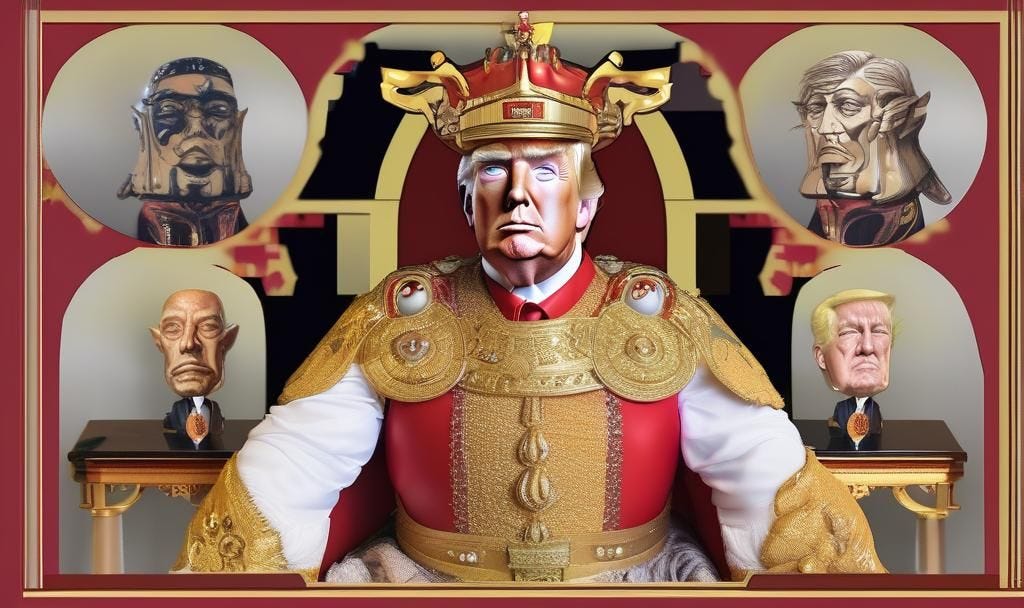The 2024 U.S. Election: Trump’s Victory and What It Means for America and the World
In a landmark decision, Donald Trump has defeated Kamala Harris in the 2024 U.S. presidential election, securing a return to the White House. The election followed familiar voting patterns, with most blue and red states adhering to predictable trends. Swing states, which played a pivotal role in Trump's 2016 win, once again swung in his favor, ultimately contributing to his victory. This outcome prompts significant questions about the implications for Americans, international allies, and neighboring nations like Canada. In this article, we’ll explore the potential impact on domestic policy, social dynamics, and foreign relations, both with Canada and the wider world.
Changes in Domestic Policy: What to Expect from Trump’s Second Term
With Trump’s reentry to the Oval Office, several policy changes are likely to take shape, marking a potential shift in American society and the economy.
1. Deregulation and Business-Friendly Policies
One of Trump’s key objectives in his previous term was to reduce regulatory burdens on businesses, and a similar focus is expected this time around. By minimizing restrictions related to the environment, labor laws, and corporate oversight, Trump aims to create a more flexible operating environment for businesses. This could result in less emphasis on environmental protection and social responsibility. Industries like fossil fuels, manufacturing, and construction may receive boosts, while regulatory bodies could face reduced influence, allowing companies to prioritize profit over environmental and social considerations.
2. Staffing and Civil Service Restructuring
A return to the Trump era may also bring about shifts within the civil service. Trump is expected to appoint loyalists and supporters who align with his agenda, which could influence decision-making within key agencies. While a degree of objectivity is typically maintained, an increase in ideologically aligned appointees could mean a more unified push toward Trump's policy goals across the government. This restructuring might foster a government less inclined to question the administration's priorities, potentially affecting areas like scientific research, climate policy, and public health guidance.
3. Economic Growth vs. Cost of Living Challenges
Trump’s campaign promises around economic growth, job creation, and reducing the cost of living have resonated with many voters, especially in regions hit hard by inflation and wage stagnation. While corporate tax cuts and deregulation might spur economic activity, the average American may still feel the weight of rising costs for essentials like housing, healthcare, and education. Wealth disparity remains a pressing issue, and Trump’s policies may prioritize business growth over addressing systemic inequalities. Americans will likely continue grappling with these financial pressures, especially in states where public assistance and social services are limited.
4. Social Tensions and Community Relations
Trump’s return could reignite social divisions that were evident during his previous tenure. His rhetoric has often polarized communities, and there is concern that some groups may feel emboldened to act on biases related to race, immigration, and other social issues. For communities of color, immigrants, and other marginalized groups, this could translate to a less secure social environment. Meanwhile, undocumented immigrants might face stricter policies, with an increased risk of deportations and ICE enforcement actions, which could disrupt families and communities across the country.
Impact on U.S.-Canada Relations: Trade, Politics, and Social Dynamics
Canada, sharing one of the world’s longest borders with the U.S., will inevitably feel the ripple effects of Trump’s presidency. Here’s how Trump’s return could affect Canada on multiple fronts:
1. Tensions in Trade Relations
Historically, Trump has taken a firm stance on trade, often pushing for policies that favor U.S. economic interests. Canada’s economy is closely intertwined with the U.S., and Trump’s approach could strain this relationship. If Trump pressures Canada into one-sided trade agreements, Canadian industries, particularly those involved in manufacturing, agriculture, and technology, could face competitive disadvantages. Trump’s "America First" policies might lead to tariffs or restrictive trade measures, affecting Canadian exports and potentially leading to reciprocal actions from Canada.
2. Political Friction with Prime Minister Trudeau
Trump and Trudeau have had a complex relationship. While Trudeau has attempted to maintain diplomatic ties, Trump has expressed a personal dislike for the Canadian leader. Speculation suggests that this tension may stem partly from perceived social dynamics, including Ivanka Trump's past interactions with Trudeau, which have reportedly created friction. On a national level, Trump’s stance could lead to a more aggressive approach toward Canada, including attempts to influence domestic Canadian politics. For instance, Trump may indirectly support political movements in Canada that align with his ideology, hoping for a leadership change that could lead to more favorable relations with his administration.
3. Immigration and Refugee Policy Implications
Canada has long been seen as a haven for refugees and immigrants, but recent increases in immigration have strained its resources. For Americans considering a move northward in response to U.S. policies, Canada may no longer be the ideal option it once was. Canada’s infrastructure, social services, and job market have been impacted by mass immigration, leading to a shift in public sentiment and growing calls for more restrictive policies. In light of Trump’s policies, Canada may see an increase in asylum requests from the U.S., but its capacity to accommodate these individuals will likely be limited. Prospective immigrants may need to consider alternative destinations as Canada grapples with domestic pressures.
Global Implications of a Trump Presidency: What It Means for Allies and Adversaries
Trump’s influence extends well beyond U.S. borders. Here’s how his presidency may shape international relations in various regions:
1. Eastern Europe and the Future of Ukraine
Trump has expressed skepticism about continued support for Ukraine in its conflict with Russia, which could lead to a shift in U.S. foreign policy. Congress may align with Trump in reducing military and financial aid to Ukraine, pushing it toward a peace settlement with Russia. This would weaken Ukraine's position and potentially embolden Russian expansionism, raising concerns for neighboring European nations. The European Union may need to bolster its defense initiatives and strengthen regional alliances as U.S. support becomes less certain.
2. Asia: China, Taiwan, and Trade Tensions
Trump’s relationship with China has been characterized by both confrontation and pragmatism. While he might continue selling arms to Taiwan and promoting trade with the island, Trump’s administration could be swayed if China offers favorable trade or economic concessions. This delicate balancing act may increase regional tensions, as China views U.S. support for Taiwan as an impediment to reunification ambitions. Additionally, if U.S. support for Ukraine wanes, China could perceive this as an opportune moment to escalate its efforts to bring Taiwan under its control, potentially leading to conflict.
3. Middle East Dynamics: Iran, Israel, and Saudi Arabia
In the Middle East, Trump’s policies could reinforce alliances with Israel and Saudi Arabia while placing adversarial pressure on countries like Iran. Trump may reinstate or even intensify sanctions on Iran, causing further strain on its economy. Simultaneously, Israel and Saudi Arabia are likely to see increased cooperation and support from the U.S., particularly in areas that align with Trump’s interests. This dynamic could reshape Middle Eastern alliances, while also heightening regional volatility as countries respond to shifting power balances.
4. Europe’s Need for Self-Reliance
Trump’s presidency could mark a period of American retrenchment, with a stronger focus on domestic priorities than international commitments. For Europe, this may necessitate a new level of regional self-reliance. The European Union, in particular, may seek to strengthen defense capabilities and reduce dependence on U.S. military support. This could result in a stronger, more unified European response to global threats, including economic sanctions on adversarial countries and increased diplomatic efforts to counterbalance U.S. foreign policy shifts.
Final Thoughts: A New Chapter of Uncertainty
Donald Trump’s return to the presidency signals a transformative period for the United States and the international community. Domestically, Trump’s policies may encourage economic growth but could deepen social divides and economic inequality. For Canadians, the impact may be seen in strained trade relations, immigration pressures, and heightened political tensions. Globally, Trump’s presidency could lead to geopolitical instability, affecting everything from the balance of power in Eastern Europe to trade and security policies in Asia and the Middle East.
As the U.S. and its allies navigate this new landscape, the world will be watching to see how Trump’s leadership shapes the future of international relations, domestic policy, and global security. While some may welcome Trump’s assertive approach, others brace for the challenges and uncertainties that lie ahead. Only time will reveal the full impact of this pivotal election on the American people and the global community.







This reads like it was written by AI